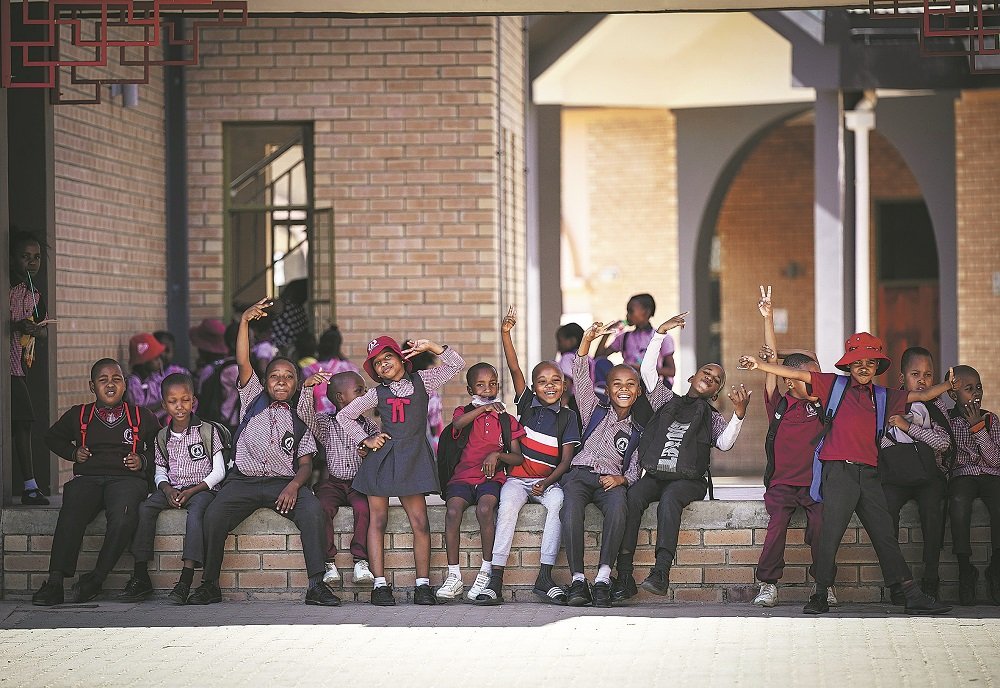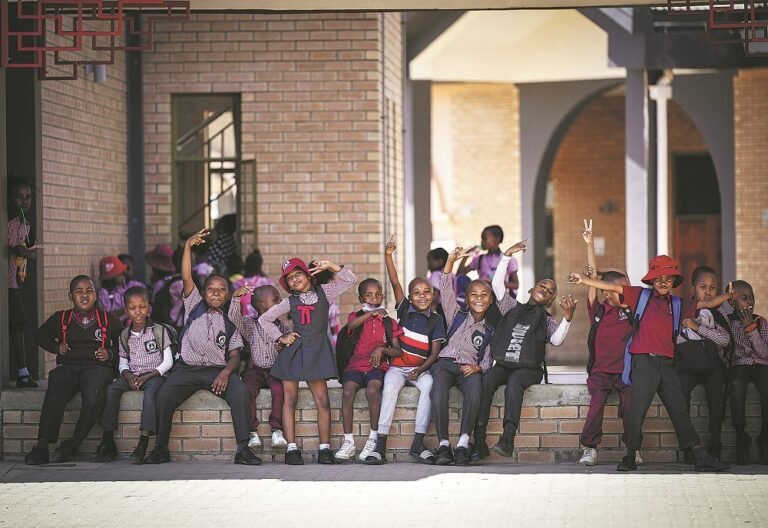
Students enjoy leisure time after school at the China-aided Mmopane Primary School in Kweneng
District, Botswana, on Nov 4, 2024. HAN XU/XINHUA
Beijing pumps in funds into green energy, technology sectors, report
says
Photo Caption
Students enjoy leisure time after school at the China-aided Mmopane Primary School in Kweneng
District, Botswana, on Nov 4, 2024.
HAN XU/XINHUA
Chinese construction contracts and investments in the countries involved in the Belt
and Road Initiative totaled $124 billion in the first half of this year, higher than the
$122-billion full-year figure in 2024, and hitting an all-time high, according to a latest
report.
Experts from Green Finance & Development Center at the Fanhai International
School of Finance, or FISF, at Fudan University in Shanghai and Australia-based
Griffith University, who jointly released the report on Thursday, said China’s energy-
related engagement in the BRI countries also touched a new record of $42 billion
during the first six months of 2025, spiking 100 percent year-on-year.
This can be
further broken down into $9.7 billion in green sectors of wind, solar and waste-to-
energy — also the highest half-year figure since BRI’s inception in 2013.
On top of that, China has helped to install 11.9 gigawatts of green energy among BRI
countries in the first six months.
Construction projects related to green energy,
including hydropower, were valued at $5.7 billion in the first half of this year, up from
$4.4 billion in the same period of 2024.
Looking at investments only, Chinese green
energy and hydropower investments reached $3.1 billion in the first half of 2025, up
from $1.3 billion during the same period last year.
Technology and manufacturing have emerged as key growth sectors, with Chinese
engagement in BRI countries totaling $23.2 billion in the first half, more than double
the figure during the same period last year.
The investments mainly focused on
electric vehicle batteries and EV manufacturing, as well as significant engagement by
Chinese solar power giant Longi Green Energy Technology in green hydrogen
development in Nigeria, according to the report.
Other notable technology engagements include a $2.1 billion investment made by
China Aviation Lithium Battery in a lithium battery factory in Portugal and a $700-
million photovoltaic glass production base in Egypt made by Xinyi Glass Holding.
Private enterprises have played a bigger role in BRI investment.
During the first six
months of the year, East Hope Group, Xinfa Group, Longi Green Energy Technology
and ByteDance, all of which are private companies, were the four biggest investors
for BRI engagement in the first half of this year.
Sinopec, a state-owned enterprise,
ranked fifth.
Christoph Nedopil Wang, founding director of FISF’s Green Finance& Development
Center, said China’s BRI engagement will focus on renewable energy, mining and new
technologies for the rest of 2025, while the total pace is expected to stabilize.
“Global trade and investment volatility will potentially spur further investment for
supply chain resilience and alternative export markets for Chinese companies,” he
said.
Manufacturing in new technologies such as batteries, renewable energy, trade-
enabling infrastructure such as pipelines and roads, information and communication
technology, best represented by data centers, resource-backed deals as well as high
visibility or strategic projects, will be the major areas for China’s future BRI
engagement, Wang further explained.
As the FISF study showed, cumulative BRI engagement reached $1.308 trillion since
its inception in 2013, with about $775 billion directed to construction contracts and
$533 billion contributed by non-financial investments.
Rebecca Ray, a senior academic researcher at Boston University’s Global
Development Policy Center, which also tracks the BRI, wrote in a June report with
her team that for the first time, from 2020 to 2024, China’s overseas development
finance is shifting away from direct project finance and toward support of
development finance intermediaries like national and regional development banks.
“Over the last decade, Chinese foreign direct investment has soared, both in absolute
terms and relative to development finance.
This shift may reflect a maturation of the
BRI, as Chinese firms gain experience overseas and can take on project management
themselves,” said Ray.
In specific countries and regions, Africa leads all regions at $39 billion in BRI-related
investments in the first half of 2025, according to this report.
Africa recorded $30.5 billion in construction engagements, a significant increase from
the $6.1 billion recorded during the same period in 2024.
Among African countries that benefited from BRI-related construction projects in the
first half of the year, Nigeria was the leading recipient, attracting about $21 billion in
investments — up from $206 million recorded during the same period in 2024.
Tanzania followed with projects valued at $3.6 billion.
Nigeria is set to construct a $20 billion Ogidigben Gas Revolution Industrial Park in
Delta State, a transformative project expected to significantly advance the country’s
gas sector.
The project will be developed, constructed and financed by the China National
Chemical Engineering Group Corporation, in partnership with Alpha Grip
Management Company.
The two companies formalized their collaboration through an
agreement signed in January.
The project positions Nigeria as the leading recipient of Chinese BRI energy
investments globally, the report said.

